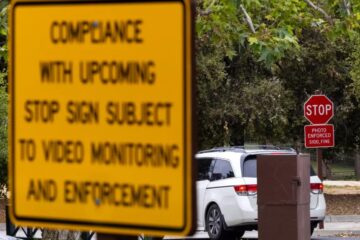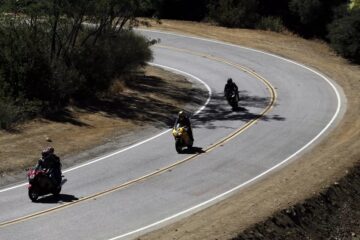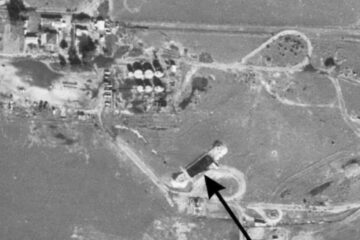Jill Swift, 79; teacher had key role in creating the Santa Monica Mountains recreation area
Source of this article – Los Angeles Times, May 23, 2008.
By Elaine Woo
Los Angeles Times Staff Writer
 Jill Swift, a former teacher and hiking enthusiast whose love of the outdoors led her to play a central role in the creation of a national park in the Santa Monica Mountains, died Monday at her home in Tarzana. She was 79.
Jill Swift, a former teacher and hiking enthusiast whose love of the outdoors led her to play a central role in the creation of a national park in the Santa Monica Mountains, died Monday at her home in Tarzana. She was 79.
The cause was multiple myeloma, which she battled for 12 years, said her sister, Wendy Averill of Los Angeles.
Swift was one of a trio of women who were widely acknowledged as the prime force behind the Santa Monica Mountains National Recreation Area. Along with Westside activists Sue Nelson and Margot Feuer, Swift helped lead the effort that won federal approval in 1978 of what is now the world’s largest urban national park.
Though Nelson and Feuer focused more on lobbying public officials, Swift devoted herself to building grass-roots awareness. She did it one step at a time, literally, by organizing hikes that brought people in direct contact with the area’s beaches, trails, flora and fauna. She led thousands of people into the mountains, most dramatically in 1971 with a march on Mulholland Drive that attracted 5,000 participants.
“Jill was absolutely crucial in getting the public informed that there was something worth saving in the Santa Monica Mountains. I would say she was the key person,” said Cecile Rosenthal, former conservation chair for the Los Angeles chapter of the Sierra Club. “Her focus was to get people out to see what was in the mountains and get them interested in it. She was very effective in that.”
Born in Oak Park, Ill., in 1928, Swift moved to Altadena in 1946. In 1952 she graduated from Stanford University and became a teacher in Montebello.
A petite woman with vibrant red hair and blue eyes, Swift began hiking with her children in the late 1960s. Although she lived in the Tarzana hills, she did most of her hiking in the San Gabriel Mountains because there was “practically no public land in the Santa Monica Mountains,” said Ron Webster, a Sierra Club trail builder who met Swift more than 30 years ago. “In our backyard was this beautiful coastal range, but no one ever went there. She felt that was a resource that really needed protecting and should be brought into public ownership.”
She began by offering one hike a month, but they became so popular — drawing 50 to 100 or more participants each time — that she began to give them weekly. “We said we’ll lead 10,000 people into the mountains and maybe 1,000 will work to preserve them,” recalled Webster, who helped lead the hikes.
Swift proved to be an innate naturalist who could identify all the wildflowers and native plants, from nicotiana and purple filaree to sticky monkey flower and deadly nightshade.
“She had an amazing knowledge of the environment, down to the smallest details,” said Woody Smeck, superintendent of the Santa Monica Mountains National Recreation Area, who went on later hikes with Swift. “You couldn’t help but be hooked in and feel the same passion she did.”
When the city of Los Angeles proposed widening Mulholland from a scenic two-lane road to a four-lane thoroughfare through the mountains, she knew it would open the way for massive development. The self-described housewife and Girl Scout troop mother mounted the Mulholland march “when my kids dared me to stop complaining about the paving of Mulholland Drive and do something about it,” she recalled in a 1997 interview with the Daily News.
Some Sierra Club members did not think the club should discourage development and opposed the march, but it turned out to be a staggering success.
“I don’t think the Sierra Club had engaged in anything that looked like a public demonstration until that campaign,” said Judy Anderson, a former chairman of the Los Angeles chapter. “People in the club were impressed with the numbers of the general public who showed up.”
Swift’s hikes and the Mulholland march “pulled in people who had only previously hiked and turned them into leaders of hikes involved in saving the Santa Monicas,” Anderson added.
After the march, Swift’s committee became an official Sierra Club task force, which she co-chaired with Feuer, a Malibu resident who later became a member of the California Coastal Commission.
Along with Nelson, who was a leader of Friends of the Santa Monica Mountains, they pushed federal officials to grant Los Angeles a national park. The authorizing legislation was signed by President Carter on Nov. 10, 1978.
Swift remained a vigorous advocate for the Santa Monica Mountains over the decades. She led the charge against a plan to extend Reseda Boulevard from the San Fernando Valley to the coast. She also became a champion of Tarzana’s Caballero Canyon and, with her late husband, Mel, formed a nonprofit group to promote and defend it.
She hiked all over the world, including Tibet. She also continued to lead hikes through her beloved Santa Monicas. One of the most popular was the Valley-to-the-Sea hike, a trek of 10 to 15 miles that began at the end of Reseda Boulevard and ended at Pacific Coast Highway in Pacific Palisades. To make it even more of an adventure, she encouraged participants to use public transit to go home after the hike. Most of the hikers did.
She entertained them with stories about the trails, including one particularly rugged footpath chiseled out of a steep slope by two men as therapy when their marriages were breaking up. She pointed out the sycamores, sage and vistas that made urban life seem so far away.
Sometimes she slipped in a serious note, such as on one Valley-to-the-Sea hike in 1989, when she pointed to a ridge that was to be leveled for a housing development.
“I want you to look at that ridge,” she said, “and remember. When the bulldozers come, please don’t call me and say, ‘Why didn’t you do something?’ ”
Swift is survived by three daughters, two grandchildren, a brother and three sisters. A memorial walk will be held at 2 p.m. June 22, beginning at the trail head to Caballero Canyon, on Reseda Boulevard across from Braemar Country Club in Tarzana.



0 Comments